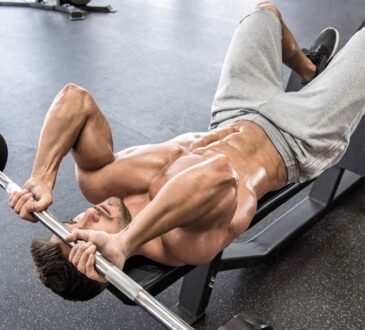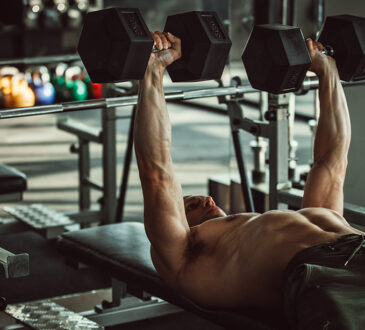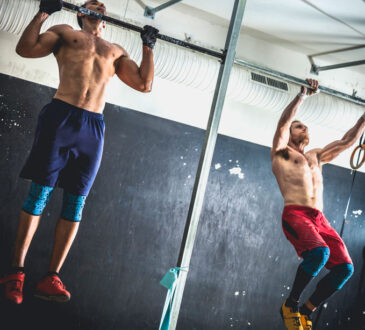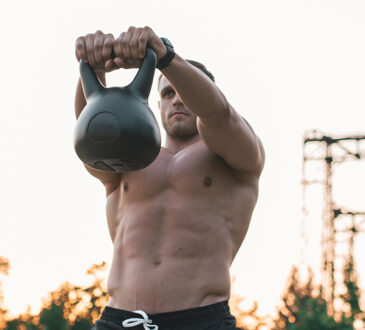
At some point, if you want to build a no-nonsense physique you are going to have to lift some heavy pig iron. This can be done safely, but only with certain exercises. It all comes down to movement selection¡ªperforming the wrong moves can be unsafe and a good way to get acquainted with a local orthopedic surgeon.
Let¡¯s take a look at six movements that are unsafe to perform with maximal weights.
1 of 7

Dumbbell Flye
Too many ¡°bros¡± at the gym turn the flye into a quasi-press or focus on swinging the dumbbells to use momentum to lift the weight instead of focusing on the muscle. The other common mistake is an extreme range of motion; you want a comfortable stretch not an attempt to touch the dumbbells to the floors.
Neither of these techniques is safe and neither produces optimal results. Any deviation in form with this movement is a shift in results, and an increase in the chance of injury. Some words of wisdom for flyes: Keep the weight light enough so you can focus on muscle isolation and technique. Otherwise, you¡¯ll risk serious injury to the shoulders and pecs.
2 of 7

Rolling Shrugs
Besides the fact that gravity resists downward, making the rolling inefficient for working the traps, this movement wreaks havoc on the?shoulder joints. I would suggest eliminating it all together and opting for shrugging up and down. If you insist on doing this movement, don¡¯t go too heavy.
3 of 7

Stability Ball Press
In any serious strength-training setting, stability ball presses have gone the way of the dodo bird. It¡¯s an unsafe to press heavy (and not as effective) on an unstable surface; these movements were intended for physical therapy not for heavy strength training. Instead, opt for pressing on stable surfaces.
4 of 7

Behind the Neck Press
There¡¯s an effectiveness of behind the neck presses for working the entire shoulder, and some old-school guys swear by them. Like anything, there is a risk-to-benefit ratio when doing these types of presses. So even though there is some benefit, the risk is fairly high.
¡°It¡¯s a really vulnerable position for the shoulder girdle, because the rotator cuff is at a mechanical disadvantage,¡± said?strength coach Eric Cressey about behind the neck presses.?An injured rotator cuff minimally means a cessation from heavy lifting and possibly a lifetime moratorium. Instead, opt for front or dumbbell presses. If you perform these, don¡¯t go heavy.
5 of 7

Kipping Pullup
Unless you are an elite-level CrossFitter, you don¡¯t need to be doing these at all. Most people do not possess the shoulder strength or stability to perform this ballistic action. Instead, I recommend not doing these at all, but, if you insist, do not add extra weight.
6 of 7

Bench Dip
Weighted dips have helped many bodybuilders and strength athletes keep them on the dip bars. Bench dips cause maximal, internal rotation and glenohumeral extension, a recipe for serious shoulder issues. Doing these beyond an occasional bodyweight finisher is flirting with disaster.
7 of 7

Final Thoughts
Lifting heavy weights is a key variable in helping you get strong and jacked. Keep in mind that?safety depends on the movement. Going heavy on these six movements is ineffective and increases the chance of injury.




